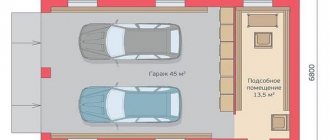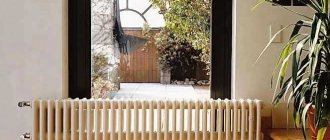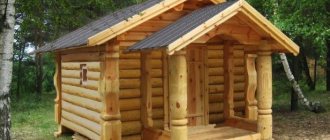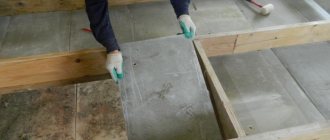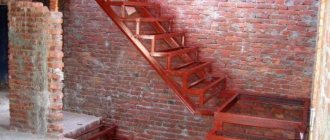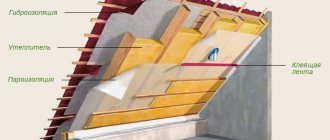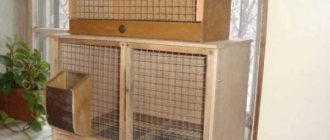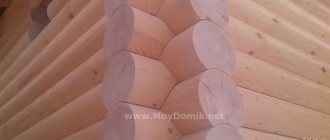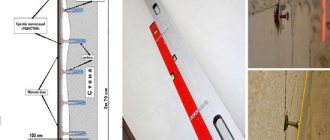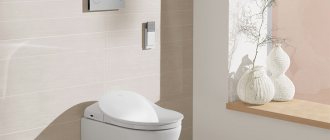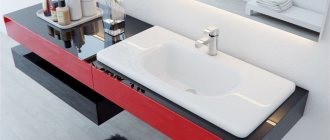General information
Not a single house in Russia is built without the use of thermal insulation material. Insulation is even used during the construction of buildings in warm regions. This is directly related to its properties. After all, it keeps rooms not only warm, but also cool in hot weather. Therefore, even at the initial stage of construction, when material is purchased, it is so important to know the dimensions of the insulation.
In addition, when choosing and purchasing a heat insulator, you must not make a mistake with its manufacturer. After all, you need to use high-quality insulation to create building structures with effective thermal insulation.
In addition, correctly selected mineral wool, the dimensions of which are known, will allow you to properly prepare the base. As a result, it will be possible to quickly lay the material. Therefore, time will be saved and construction time will be reduced. Moreover, in most cases, slab material does not even have to be trimmed if a competent building structure is calculated and prepared for it in advance, for example, in the form of a frame.
Laying mineral wool in a pre-prepared frame made of wooden blocks Source baseel.ru
Usually they try to take into account the dimensions of mineral wool when construction is carried out:
- Floors with insulation due to dense laying of mineral wool between adjacent joists.
- Attics with living rooms, because the size of the mineral wool in the slabs affects the distance between the joists, rafters and the configuration of each cell in the partitions if there are several rooms in the roof.
- Frame houses, because mineral wool is used during the construction of walls and other building structures of such buildings.
During external work, when cladding facades, for example, with siding, a frame is also often first created, which is used to secure not only the finishing material, but also the heat insulator. Therefore, in such a situation, you also need to know the size of the mineral wool insulation for the walls.
Of course, the popularity of this material is associated with its properties. Moreover, such insulation is produced in a convenient form for installation, transportation and storage.
The shape of mineral wool in the form of slabs allows for convenient installation, transportation and even storage of the material Source dachnaya-zhizn.ru
Insulation for the ceiling of a house - bulk, roll or slab
The main problem that every owner of a personal home faces is thermal insulation measures, including thermal insulation of the ceiling.
It is known that more than 60 percent of heat loss is due to an uninsulated ceiling or poor insulation.
The insulation of the ceiling of the house needs to be given special attention, therefore
You need to choose ceiling insulation according to a number of criteria:
• fire safety
• insulation characteristics (density and hygroscopicity)
• simplicity and accessibility of manual installation.
There are currently plenty of thermal insulation materials.
There are several technologies for insulating the ceiling of a personal home:
• using rolls or slabs (mineral wool, sheet polyurethane foam, polystyrene foam)
• spraying watery polyurethane foam.
How do professionals recommend insulating the ceiling in a house?
Types of mineral wool
For many decades, mineral wool has been in demand in construction. This name refers to fibrous insulation material. This is a generalized name for heat insulators, for the manufacture of which manufacturers use various inorganic raw materials. At the same time, many of them produce mineral wool, the slab dimensions of which are standard.
This type of insulation is used in the construction of approximately 70% of all private houses. Mineral wool is produced in accordance with the technical requirements of GOST 31913-2011.
Differences in mineral wool based on the raw materials used
Mineral wool is produced by weaving fibers that are obtained from various inorganic raw materials. During manufacturing, they are tightly connected to each other. Therefore, the slabs are elastic, but the material has an airy structure. Its type is influenced by the composition of the initial mixture, which is used in the production of the heat insulator.
Stone or basalt wool
To produce this type of mineral wool, different rocks are used. Manufacturers often use basalt.
Basalt wool slabs Source asamrockwool.com
Also used in production:
- dolomite;
- diabase;
- limestone;
- porphyrite
Thermal insulation boards made from only one basalt fiber have almost the same properties as glass wool. This material is used exclusively on technological devices. It is used to isolate equipment at various enterprises.
In building structures, insulating boards are used, which, in addition to stone fibers, also contain additives of mineral and synthetic origin. These are connecting components. Manufacturers change their percentage in the material, producing slabs of different densities. This characteristic must be taken into account when choosing the dimensions of mineral wool insulation. The mechanical properties of the heat insulator also depend on the amount of binders.
Basalt slabs of different thicknesses Source vuuhh.com
See also: Catalog of companies that specialize in home insulation
Glass wool
This type of thermal insulation material is commonly called glass wool. In its production, quartz sand, lime and soda are used. Exactly the same components are used to make ordinary glass. Manufacturing enterprises that extrude this material have to dispose of the scrap. This is what is used in the manufacture of glass wool. Substandard glass products are also introduced into the mixture for the production of insulation.
Glass wool is an excellent insulating material that retains heat well. However, it is used less and less in the form of slabs and other versions, because its fibers have increased fragility. Even with a slight mechanical impact on glass wool, a large number of small particles with very sharp edges are ejected from the material.
Glass wool slabs Source sense-life.com
It is precisely because of small sharp particles that it is inconvenient to work with glass wool. A person has to protect all exposed areas of the body and respiratory organs. To increase the level of safety during installation of glass wool, manufacturers produce the material in a durable shell. This is what helps reduce health risks.
Slag
To produce this type of insulation, waste from blast furnace production is used. Slag wool is sold at a more affordable price than other similar fibrous thermal insulation materials. At the same time, it has less thermal resistance and inferior thermal conductivity.
In addition, slag wool absorbs water well. Therefore, it is not used for insulating foundations, roofing structures and external walls. Slag wool is also characterized by low environmental safety and a short service life. It is not used in the construction of private houses. Therefore, the thickness, length and width of insulation in the form of slag wool are of no interest to either homeowners or builders involved in the construction of low-rise residential buildings.
Slag wool is one of the most harmful varieties of mineral wool Source rusvoin.ru
Differences in mineral wool in shape
Large areas are insulated using mineral wool. This becomes possible due to the fact that the material is light, has good elasticity, and has an excellent ability not to change its dimensions. Although roll insulation is often used in construction, heat insulation in the form of slabs is still more popular.
Wall structures and roofs are insulated with mineral wool. For these purposes, rectangular slabs with a rigid and semi-rigid structure are used. For their installation, it is necessary to prepare a solid foundation in advance.
In addition, mineral wool slabs themselves can withstand a small load. Therefore, they are often used during external thermal insulation of a building under a thin protective plaster layer. The thickness of mineral wool for wall insulation is almost always the same over its entire area.
Roll and slab of mineral wool Source fresh-lifehack.ru
Is it worth insulating a monolithic slab base?
To achieve maximum energy efficiency of a structure, it is necessary to implement thermal insulation of the slab foundation both from below and along the perimeter of the structure.
In some cases, you can limit yourself to an insulated floor and basement, but when organizing an exploitable basement, thermal insulation of the base is a prerequisite to ensure a reduction in heat loss and comfortable living in the house.
Opinions for and against
Some practicing builders save money and refuse thermal insulation, justifying this by using concrete with low thermal conductivity or a high base. However, improving the insulating parameters of the design will simplify and make its operation cheaper.
So, insulation of a monolithic foundation slab:
- prevents destruction of concrete from temperature changes;
- makes it possible to save on heating the building;
- reduces the heaving of the soil under the building.
Only these three factors are enough to think about carrying out work. It should also be noted that with competent engineering design, it is possible to move the dew point beyond the contour of the main part of the building.
As a result, water will not accumulate inside the structure, which means that corrosion processes will not develop and conditions will not be created for the appearance of fungus and mold.
When it is necessary?
The issue of insulating slab foundations should be given special attention to residents of regions with difficult climatic conditions and deeply frozen soil. This zone occupies up to 80% of the entire territory of the Russian Federation.
Without high-quality insulation in the foundation structure, heaving soils at subzero temperatures will increase in volume and rise, violating the integrity of the reinforced concrete slab and causing cracks to appear in the walls of the structure itself.
Gost dimensions
There are clear requirements for insulating mineral wool. They are formulated in the state standard.
Gostov grades of mineral wool slabs
When choosing insulation, you need to know not only the brand and size of stone wool in the slabs, but also the scope of its application. After all, each type of such material differs in performance indicators.
Fiber insulation is characterized by the degree of deformation when it is compressed. This material also comes in different grades. They allow you to find out its density.
In accordance with GOST, there are the following designations for mineral wool slabs:
- PM is a soft board that can have a density of 40 or 50 kg/m3.
Insulation with the lowest characteristics is used during the construction of floors on the first floor of the house. It is also used in the construction of floors and pitched roof structures. An unloaded sound and heat insulating layer is created from it. In this case, PM-50 is mounted during the construction of frame partitions.
- PP is a semi-rigid board whose density can be 60, 70 or 80 kg/m3.
Semi-rigid stone wool slabs Source baustof.ru
PP-60 also allows you to create an unloaded sound and heat insulation layer in building structures. These are floors, ceilings, pitched roofs, partitions in rooms. This variety is also used in the construction of lightweight walls consisting of three layers.
PP-70 is used during the construction of lightweight structures based on frames. This type of slab is also used to create three-layer walls. At the same time, PP-80 is suitable for thermal insulation of structures made of aerated concrete and other similar materials.
- RV is a rigid insulating board with a density of 100, 120 or 140 kg/m3.
PZh-100 is used for sound insulation and insulation of ceilings above basements and walls, including installation of ventilated facades. PZh-120 is used in the construction of lightweight aerated concrete, brick and other walls consisting of 3 layers. PZh-140 is used as insulation in roofs and three-layer wall structures.
- PPZh is an insulating board with increased rigidity, the density of which can be 160, 180 or 200 kg/m3.
Mineral wool slabs with increased rigidity Source pen.specdispetcher.ru
PPZh-160 and 180 - materials for insulation and sound insulation. They are used in the construction of flat roofs from corrugated sheets or reinforced concrete slabs. At the same time, they are not covered with a screed and a leveling layer is not created.
PPZh-200 – insulation for facades. It is protected with plaster. The material is also used in the construction of roofing structures and during the construction of three-layer walls.
- PT is a solid board with a density of 225, 250 or 300 kg/m3.
PT-220 is used for sound insulation and insulation of wall structures and ceilings. PT-250 is used as a sound and heat insulating material that can be subject to load. It is used during the construction of flat roofs from corrugated sheets or reinforced concrete slabs. At the same time, a leveling layer is not created on the roof and no screed is made to increase the strength of the structure.
PT-300 is an insulating material with good sound insulation and noise reduction properties. It is used when arranging the bases of technological equipment and during the construction of floors, partitions in rooms, and ceilings.
Solid mineral wool slabs Source ultra-term.ru
All materials are marked with special markings. It allows you to find out the type, GOST, flammability and size of stone wool. If the heat insulator is laminated, then a letter is placed in front that indicates the material used. For example, it could be foil.
Basic properties
When choosing an insulating material for wall, floor, ceiling and roofing surfaces, you should take into account its thermal insulation properties
Of no small importance is the fire resistance class, vapor permeability, and resistance to moisture. In all these respects, mineral wool is superior to many competing materials, and it also falls into the budget category
In all these respects, mineral wool is superior to many competing materials, and it also falls into the budget category.
Mineral wool slabs are often used to insulate ceilings, floors, walls, and roofs.
When starting to choose insulation from mineral wool slabs, it is necessary to understand the main criteria by which its suitability for use in certain conditions is assessed. The fibers of the material have a number of advantages:
high strength, the indicator of which is affected by the density of the slab; insignificant weight, which is very important in preventing overload of the created structure; prevention of rotting processes and fungal formation; repelling small pests; flammability resistance; service life up to 50 years.
Optimal thickness of mineral wool for roofing and other house structures
The required dimensions are selected during design. It is important to correctly determine the thickness of the thermal insulation material that will be used in walls, roofs and other building structures. The following depends on the thermal insulation layer and its density:
- durability of building elements;
- room temperature;
- level of living comfort of people.
The stone wool used, the dimensions of the slab of which are selected correctly, will effectively retain heat in the rooms of the house. It will not escape through the outer walls, roofing, floor of the first floor and other structures of the building. Proper insulation allows you to reduce energy consumption in the winter months, and use the air conditioning system less often in the summer.
On a note! Professionals believe that approximately 20% of the heat can escape from the room through the roof structure if only the attic floor of the house is insulated. In this case, there is no thermal insulation material in the roof itself.
The main heat losses through the external structures of a residential building Source santehnika-nk.ru
During the operation of the house, the owner may often decide to expand the living space. This problem is solved by constructing extensions or arranging premises that were not previously used for the permanent presence of people. One of such spaces in the house can be the roof. They make an attic out of it. In this case, there is no way to do without insulation. Thermal insulation materials will also be required if there is a need to improve the energy efficiency of the building.
During the construction or reconstruction of a house, mineral wool is almost always used. After all, it has better properties compared to polystyrene foam. Moreover, the latter material with a foam structure is not recommended for use when constructing a roofing pie. After all, it is a flammable and harmful insulation material. In addition, a mineral wool board is cheaper compared to the price of polystyrene foam.
When choosing insulation, the weight, hygroscopicity, and shape stability of the heat-insulating material are taken into account. After all, it should not create additional load on building structures, not absorb water and not deform.
Mineral wool slabs are almost ideal for home insulation Source saucyintruder.org
The material used must also have high fire resistance, durability and environmental friendliness. These requirements are fully met by mineral wool slabs made from basalt raw materials, which are produced by different manufacturers in large quantities.
The optimal thickness of mineral wool is selected by specialists as a result of thermal engineering calculations. During this process, two main parameters are taken into account. One of them is the thermal conductivity coefficient. It is known for each type of thermal insulation material. To designate it, the letters λB are used, and this characteristic is measured in W/m*K.
Manufacturers of insulation usually indicate the thermal conductivity coefficient on the packaging. It can also be found from the material certificate. Knowing this characteristic, the ability of the insulation to retain heat is assessed. The thermal conductivity coefficient should be as low as possible.
Important! In the case of mineral wool, this characteristic is a minimum of 0.038 W/m*K, and a maximum of 0.055 W/m*K.
Mineral wool has a maximum thermal conductivity coefficient of 0.055 W/m*K Source grandmetal26.ru
Types and characteristics
Mineral wool insulation materials are widely used.
Their popularity is explained by their high operational and technical indicators and relatively low cost.
Roll insulation based on mineral wool includes:
- Basalt wool. The material is obtained by melting rocks of a certain type and forming thin fibers.
- Glass wool. Insulation made from molten broken glass is affordable. Thanks to this, the material is in high demand, although it is considered obsolete.
- Slag-like. The material is based on waste from the metallurgical industry, so it has a fairly low price.
Insulation based on mineral wool has its own distinctive properties:
- temperature resistance;
- low thermal conductivity;
- high density;
- absorption of vibrations and sound vibrations;
- no shrinkage after long-term use.
Foil roll insulation is made from expanded polystyrene foam by applying it to a layer of foil. The foil creates the effect of a thermos, pushing heat back into the room.
The main properties of foil roll insulation include:
- high thermal insulation;
- reliable vapor barrier;
- good noise absorption;
- fire safety;
- durability.
Intercrown roll insulation represents a rather specific solution. The main purpose is to fill the empty space between the crowns. Even high-quality assembly of houses from profiled timber or logs cannot guarantee a tight fit of the elements. An inter-crown heat insulator will fill the free space.
Video description
The calculation of the thickness of mineral wool slabs is described in the video:
The climatic zone of the location of the house directly affects the thickness of the insulation. If the temperature is very low in winter and the heating season lasts a long time, then more insulating material will be required. After all, it will be necessary to lay a thick layer of it. However, less insulation will be required if, for example, the house has wooden walls or they are built from foam blocks. These materials have lower thermal conductivity than brick or reinforced concrete structures.
Important! Often, to calculate the thickness of the insulating material in frame walls, a simpler formula is used - αут=(R-0.16)*λB.
The index “B” for the thermal conductivity coefficient of insulation means that it will be used in damp conditions. After the calculation has been completed, professionals usually increase the thickness of the thermal insulation material by 10%. This allows you to obtain the optimal size of insulation.
The thickness of the thermal insulation material for the roofing pie is calculated using the same formula as for walls. The only difference will be the value of the thermal resistance used. Because it is different for walls and roof.
Reduced value of heat transfer resistance for a wall made of different materials Source sense-life.com
On a note! The thickness of the insulating material is calculated and selected depending on the structure in which it will be installed. Typically, thicker insulation is used in the roof than on the walls. Because the latest designs have less thermal conductivity. Although it also directly depends on the materials from which they are made.
Important! The thickness of the thermal insulation material for each type of building envelope is selected separately.
Tips for choosing
When choosing roll materials for insulating rooms, you should listen to the advice of experts:
- To insulate surfaces indoors and outdoors, it is better to use different insulation options.
- Use a material suitable for specific types of work: for example, for walls, which means choosing insulation suitable for walls, etc.
- When choosing the thickness of the material, you should take into account the climatic features of the area.
- Insulation in rolls of any purpose and manufacturer must be certified.
Roll insulation materials are available to consumers in a wide range. They all have their own characteristics, their pros and cons. When choosing one or another insulation option, it is best to use the help of professionals. This will help to avoid unnecessary costs and unpleasant moments during the operation of the material.
Watch the video that explains the features of using roll insulation for pitched roofs:
Mineral wool size of famous brands
When choosing mineral wool insulation boards, then in most cases preference is given to materials from popular manufacturers. Nowadays, many companies produce mineral wool in the country. They can produce insulation whose dimensions differ from GOST standards.
Popular brands include:
- TechnoNIKOL is a company producing mineral wool, including thermal insulation material made from basalt fibers for ventilated and wet facade structures. Mineral wool boards are available in lengths from 100 to 350 cm and widths of 50 or 60 cm. However, their thickness can be 2-25 cm.
- Paroc is a manufacturer of systems for thermal insulation of various house structures, including roofs, facades, foundations, and floors. The length of the product is 120-180 cm, and the width is 20-270 cm. At the same time, the thickness of the slabs is 2-35 cm.
Mineral wool slabs under the Paroc brand Source ygozapad.ru
- Rockwool - Concert manufactures sound and heat insulation materials, including mineral wool boards with or without foil for roofing, façade ventilated systems or for plastering. The length of the material can be 80-240 cm, and the width - 20-120 cm. At the same time, its thickness varies from 3 to 25 cm.
- Isover is a brand under which basalt fiber insulation is produced for various horizontally or vertically located structural elements of houses. The produced slab material can have a length of 100-138 cm and a width of 60-119 cm.
- URSA is a company that produces insulation for walls, foundations, roofs of houses, saunas and baths. This brand produces fiberglass-based mineral wool boards. They have a length of 100-135 cm and a width of 6-61 cm. Moreover, their thickness is 2-13 cm.
Izovol mineral wool boards are also often used in the construction of houses. This brand belongs to . Mineral wool slabs under this brand have a length of 100-120 cm and a width of 60 or 100 cm. However, their thickness can be 4-25 cm.
How to insulate?
Before carrying out foundation work, an individual developer needs to prepare material, foam for sealing joints, as well as a tool for cutting slabs.
The heat insulation sheets must have the same thickness. When possible, slabs with stepped edges are used to ensure maximum contact of materials with each other. If the gap between the insulation parts exceeds 5 mm, it is sealed with polyurethane foam.
From below
To protect the base of the house from freezing from below, a layer of insulation can be laid in two ways:
- into the body of the foundation;
- on top of the stove.
In the first case, the bottom of the pit is carefully leveled and covered with geosynthetic material. A cushion made of non-metallic material is placed on top. To do this, sand and crushed stone are poured layer by layer onto geotextiles, moistened and compacted using special equipment.
Overlapping waterproofing material is laid on the pillow, securely fixing the seams with a soldering iron . A layer of heat insulation, usually made of penoplex, is mounted on top. It is convenient to work by joining the slabs using a locking system.
The seams are sealed with polyurethane foam. One of the next technological stages will be to lay the reinforcement cage and utility networks on the horizontal surface of the insulation.
Thermal insulation of a slab foundation can be carried out on top of the slab:
Waterproofing is installed on the monolith.- Logs are mounted on top.
- A layer of thermal insulation is laid between the joists.
- A waterproofing film is attached to the joists on top.
- Install a plank base as a subfloor.
Since penoplex has increased strength, in this case you can do without logs. The slabs are placed on the waterproofing layer with a continuous surface, a substrate is laid on top and a finishing coating is arranged.
Along the perimeter
Thermal insulation of the slab foundation along the perimeter can significantly reduce heat loss in the house . Insulation boards are installed in a vertical position along the inner perimeter of the board formwork.
If a knitted reinforcement frame is used for a monolithic slab, then a layer of waterproofing film is laid to protect the insulation from the liquid components of the concrete solution. When the reinforced frame is assembled by welding, a thin screed of low-grade concrete must be made on top of the waterproofing insulation.
The insulation can also be placed on a finished monolithic slab with already implemented waterproofing . The heat insulator is attached to the surface with glue or through melted bitumen. The means for fixing the materials is applied pointwise, and then the canvas is pressed tightly against the wall.
Thermal insulation of the base begins from below, laying out the parts first in a horizontal row. Each subsequent sheet is attached butt to the previous one.
Changing the position of the heat insulator two minutes after applying the fixing solution is not allowed!
Briefly about the main thing
The dimensions of mineral wool in slabs must be known during the construction of frame houses, attic rooms and when installing floors. Manufacturers make the material from basalt fibers, glass wool and blast furnace waste. The latest type of insulation, slag wool, is not used in the construction of private houses.
Soft, semi-rigid, rigid, with increased rigidity and hard mineral wool slabs are produced. Their standard length and width are 50-200 cm and 40-100 cm, respectively, and thickness varies from 2 to 20 cm.
Slabs are selected not only by length and width, but also by density and thickness. For a more accurate result, it is necessary to perform a thermal calculation. During construction, TechnoNIKOL, Rockwool, isover, URSA insulation is used.
Ratings 0
Features of three-layer wall construction
This type of wall construction is similar to a sandwich. Two walls, and between them a heat-insulating material. Walls made of foam block and brick are often insulated in this way.
Option for wall insulation using sandwich technology.
This insulation option is used in almost all new buildings. Rough brick wall, insulation and facing layer.
Extruded polystyrene foam boards are best suited for this type of insulation. Despite the good thermal insulation properties, this type of wall insulation also has a drawback. It is not as durable as other insulation options.
